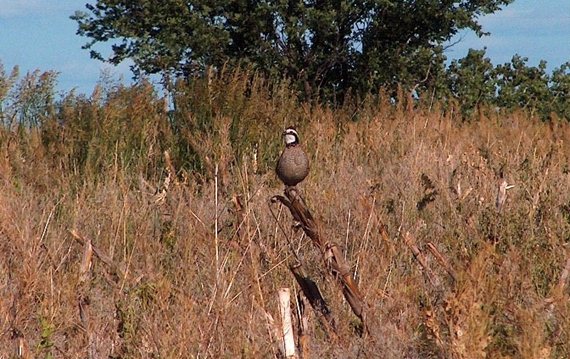Throughout the quail range, nesting cover, winter cover, and brood rearing cover are important factors which can influence wildlife populations.
NESTING COVER BASICS
Nesting cover is the single most significant limiting factor for wildlife populations, which makes it a major consideration for upland habitat projects. Here are some considerations for ideal nesting cover:
- Secure - Cover providing overhead and horizontal concealment from predators
- Undisturbed - Free from both human (mowing, dog training) and weather related (flooding) disturbances
- Diverse - Ideal nesting cover should contain several species of grasses and forbs at a minimum
- Dynamic - Planning ahead to manage for diverse nesting cover yields the best results
- Structure - Research has shown that quail perfer to nest within reasonable distance of an "edge" - an area where two habitats intersect
- Unconventional - Roadsides also provide habitat with up to five acres of potential nesting cover along each mile of rural Midwest roads.
Quail live out their lives within a home range of about 40 acres, requiring all habitat components (nesting cover, brood habitat, covey headquarters, and food plots) to be in close proximity.
WINTER COVER BASICS
As temperatures plummet and snow blankets grassland habitat, quail and other wildlife utilize winter cover to seek shelter from the bitter winds and heavy snow. Exposure to the extremes of winter can limit the condition and number of quail that survive to the nesting season, leading to reduced reproduction the following spring. Quality winter cover located near a high-energy food source can provide the elements needed by quail and other wildlife to survive in harsh winter conditions. Shelterbelts or stiff-stemmed native grasses such as switch grass are examples of good winter cover.

BROOD REARING COVER BASICS
Brood rearing cover is another important component to successful quail management. Broad leaf plants attract insects critical for chick survival during a broods' first few weeks of life. Species like alfalfa, sweet clover, wild flowers, and a diverse group of native legumes can be incorporated into grassland seeding mixes to create brood rearing habitat. Reducing the number and acres of row cropped food plots and converting them to brooding habitat areas can increase chick survival on your property. Other important brood rearing cover components:
- Protection - Good lateral and overhead concealment from predators
- Openness - Travel corridors at ground level to feed freely through a stand of cover
- Bug Production - Food sources readily available for hungry chicks
STILL CONFUSED ABOUT NESTING, WINTER OR BROOD REARING COVER?
Be sure to check with your local chapter of Quail Forever, where you will find cost sharing, planting assistance, or just advice from a friendly chapter volunteer.